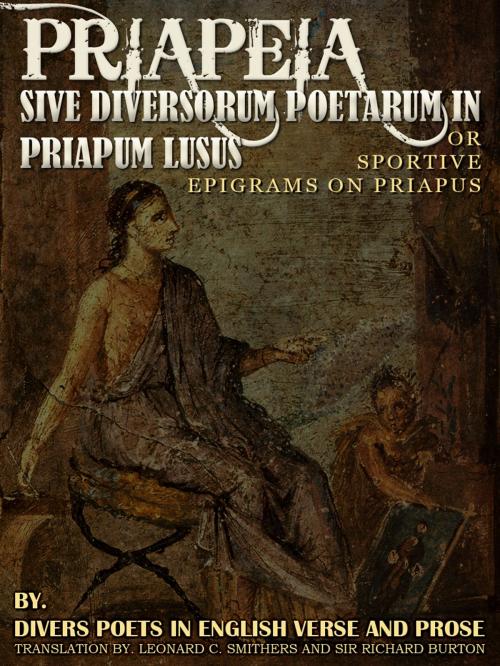Priapeia Sive Diversorum Poetarum In Priapum lusus
Nonfiction, Religion & Spirituality, Reference, History, Fiction & Literature, Short Stories, Historical| Author: | Leonard C. Smithers, Sir Richard Burton | ISBN: | 1230000036537 |
| Publisher: | AppsPublisher | Publication: | December 2, 2012 |
| Imprint: | Language: | English |
| Author: | Leonard C. Smithers, Sir Richard Burton |
| ISBN: | 1230000036537 |
| Publisher: | AppsPublisher |
| Publication: | December 2, 2012 |
| Imprint: | |
| Language: | English |
PRIAPEIA-sive diversorum poetarum in Priapum lusus
translation by Leonard C. Smithers and Sir Richard Burton
The Priapeia, now for the first time literally and completely translated into English verse and prose, is a collection of short Latin poems in the shape of jocose epigrams affixed to the statues of the god Priapus. These were often rude carvings from a tree-trunk, human-shaped, with a huge phallus which could at need be used as a cudgel against robbers, and they were placed in the gardens of wealthy Romans, for the twofold purpose of promoting fertility and of preventing depredations on the produce.
Most of these facetiae are by unknown authors. Although they appear in early editions of Vergil, and are attributed to that writer by J. M. Catanaeus, it is, to say the least, doubtful that he played any part in their authorship. Politian attributes them to Ovid; others, such as François Guiet, hold Domitius Marsus to be their author. The general opinion is that they are the collective work of a group of beaux esprits who formed a reunion at the house of Maecenas (the well known patron of Horace), and who amused themselves by writing these verses in a garden-temple consecrated to Priapus. Subsequently Martial and Petronius added several imitative epigrams, and eventually the whole were collected in one volume by the writer of the opening verses. Catullus, Tibullus, Cinna and Anser are also credited with a share in the work.
95 passages in English and Latin, with notes and glossaries.
PRIAPEIA-sive diversorum poetarum in Priapum lusus
translation by Leonard C. Smithers and Sir Richard Burton
The Priapeia, now for the first time literally and completely translated into English verse and prose, is a collection of short Latin poems in the shape of jocose epigrams affixed to the statues of the god Priapus. These were often rude carvings from a tree-trunk, human-shaped, with a huge phallus which could at need be used as a cudgel against robbers, and they were placed in the gardens of wealthy Romans, for the twofold purpose of promoting fertility and of preventing depredations on the produce.
Most of these facetiae are by unknown authors. Although they appear in early editions of Vergil, and are attributed to that writer by J. M. Catanaeus, it is, to say the least, doubtful that he played any part in their authorship. Politian attributes them to Ovid; others, such as François Guiet, hold Domitius Marsus to be their author. The general opinion is that they are the collective work of a group of beaux esprits who formed a reunion at the house of Maecenas (the well known patron of Horace), and who amused themselves by writing these verses in a garden-temple consecrated to Priapus. Subsequently Martial and Petronius added several imitative epigrams, and eventually the whole were collected in one volume by the writer of the opening verses. Catullus, Tibullus, Cinna and Anser are also credited with a share in the work.
95 passages in English and Latin, with notes and glossaries.















